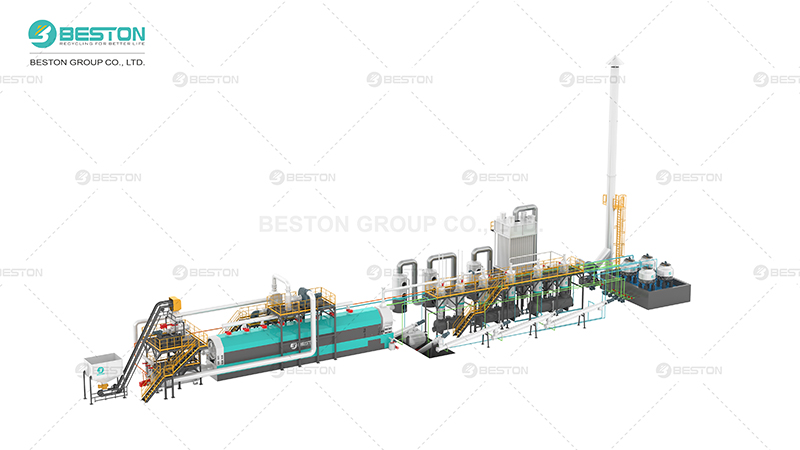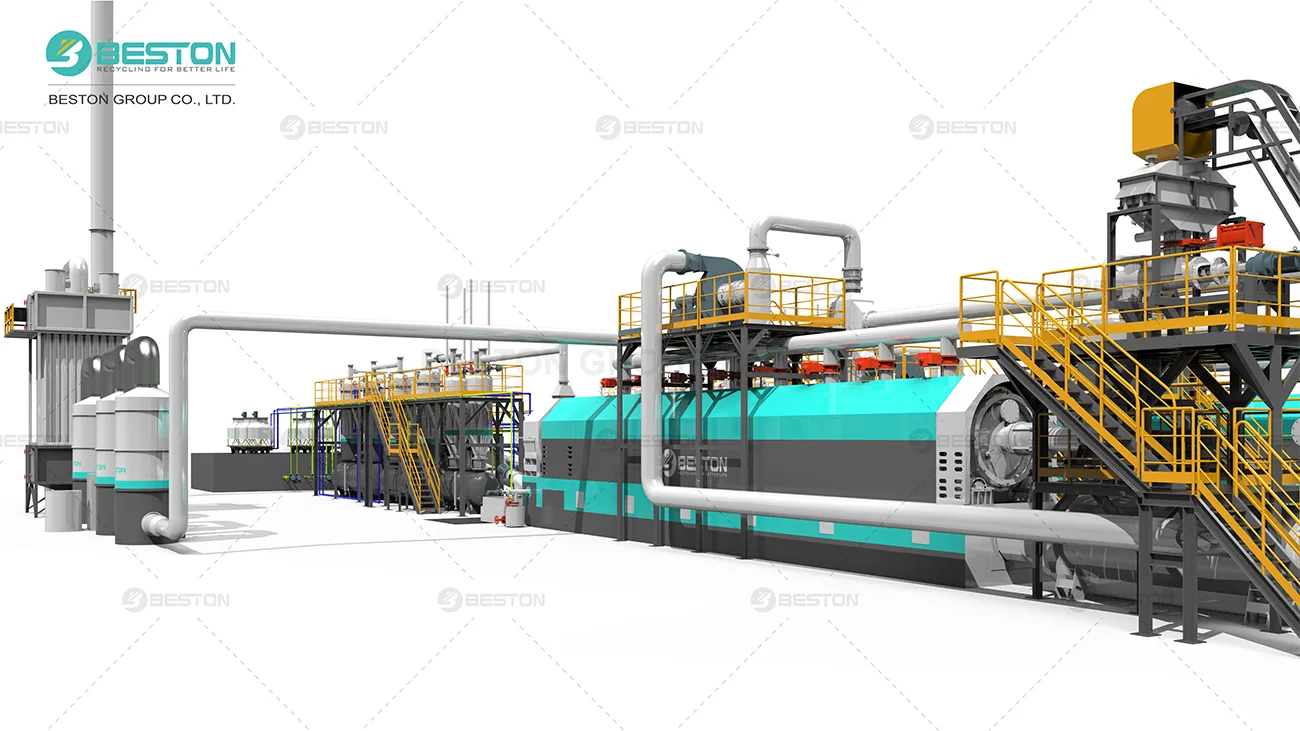Plastic waste management continues to be a global challenge, with a growing need for efficient, sustainable solutions. Among the technologies available, the continuous pyrolysis reactor offers distinct advantages for plastic pyrolysis, providing a more efficient and scalable approach than traditional batch processing systems. By converting plastic waste into valuable by-products like bio-oil, syngas, and carbon black, continuous pyrolysis reactors contribute to both environmental sustainability and economic profitability. This article explores the advantages of using a continuous pyrolysis reactor in plastic pyrolysis operations, highlighting its efficiency, cost-effectiveness, and scalability.

Continuous Process for Increased Efficiency
A significant advantage of continuous pyrolysis reactor is the ability to maintain an uninterrupted feedstock input. In a continuous system, waste materials such as plastic are continuously fed into the reactor, allowing for a constant output of pyrolysis products. This continuous process eliminates the downtime typically associated with batch systems, where the reactor must be cooled, unloaded, and recharged after each cycle.
The ability to maintain a continuous flow of feedstock into the reactor significantly boosts the operational efficiency of the plant. With minimal interruption to the process, the reactor can operate at a steady pace, maximizing production and reducing operational costs. This constant throughput leads to a more consistent supply of bio-oil, syngas, and carbon black, which are in high demand across multiple industries.
Enhanced Productivity and Output
The continuous nature of plastic pyrolysis reactor ensures that large quantities of plastic waste can be processed without the limitations imposed by batch cycles. A continuous pyrolysis reactor can handle a high volume of plastic waste compared to a batch system, which requires periodic shutdowns for maintenance and feeding. This means that the reactor can process more material in a given time frame, significantly increasing productivity.
Moreover, the consistent feeding of plastic waste into the reactor ensures a more uniform temperature distribution, leading to higher-quality end-products. The ability to process larger amounts of feedstock without interruption also opens the door to increased revenue potential, making continuous pyrolysis reactors a more attractive option for commercial enterprises.
Cost-Effectiveness and Reduced Labor Requirements
Cost management is a primary concern for businesses engaged in pyrolysis operations. Continuous pyrolysis reactors contribute to cost savings in several ways. First, the reduction in downtime results in a more efficient use of energy, as the reactor is continuously operating at optimal temperature levels. This reduces the energy expenditure per unit of output, which directly impacts the cost-effectiveness of the process.
Additionally, continuous plastic to fuel machine requires fewer manual interventions compared to batch reactors. With automated feeding and product collection systems, businesses can reduce the need for labor, thus lowering operating costs. The automation of key processes also reduces the risk of human error, ensuring that the reactor operates efficiently and safely at all times. In turn, these cost reductions contribute to a better return on investment for operators.
Improved Scalability and Flexibility
One of the standout advantages of continuous pyrolysis reactors is their scalability. Because these systems are designed to handle continuous material flow, they are more adaptable to increased production requirements. Scaling up production is simpler with continuous reactors, as adding additional capacity often involves minimal alterations to the existing infrastructure.
Furthermore, continuous pyrolysis reactors are well-suited for diverse feedstocks. While plastics remain the primary material for pyrolysis, continuous reactors can process a variety of organic waste materials, including tires, biomass, and rubber. This flexibility enhances the versatility of the plant, allowing businesses to adapt to changes in feedstock availability or market demands. The ability to process different materials broadens the range of potential products and increases the overall profitability of the operation. If you want to get equipment equipped with the latest technology, Beston Pyrolysis Solutions is your best choice.

Consistent Product Quality and Control
Product consistency is essential for maintaining a competitive edge in the pyrolysis market. Continuous pyrolysis reactors allow for greater control over the production process, leading to more uniform and higher-quality end-products. With real-time monitoring systems in place, operators can ensure that temperature, pressure, and feedstock composition remain consistent throughout the pyrolysis process.
In contrast, batch systems are more prone to variability due to the need for multiple loading and unloading cycles. These fluctuations can affect the quality of the bio-oil, syngas, and carbon black produced. By providing a more controlled and steady operating environment, continuous reactors reduce the potential for product variation and enhance overall product quality.
Environmental and Regulatory Benefits
As environmental regulations become stricter, businesses need to adopt cleaner and more sustainable technologies. Continuous pyrolysis reactors are well-positioned to meet these requirements due to their efficient waste-to-energy conversion capabilities. By converting plastic waste into valuable products, these reactors help reduce the volume of plastic waste that would otherwise end up in landfills or oceans.
Moreover, the continuous system reduces emissions, as it can more effectively manage the combustion process. In contrast to batch reactors, which may experience spikes in emissions during the loading and unloading phases, continuous systems are designed to maintain steady and efficient combustion, leading to lower emissions and a reduced environmental footprint. This makes continuous pyrolysis reactors a more environmentally friendly option, helping businesses comply with increasingly stringent environmental regulations.
Long-Term Profitability
Finally, continuous pyrolysis reactors offer greater long-term profitability compared to batch systems. The higher throughput, reduced labor costs, and consistent output ensure that these reactors generate more revenue over time. Additionally, the ability to scale up production and process diverse feedstocks further enhances the plant’s profitability, providing operators with the flexibility to adapt to changing market conditions.
The consistent quality of the products, combined with lower operational costs, increases the potential for securing long-term contracts with buyers across various industries, such as energy, manufacturing, and agriculture. With the global shift toward more sustainable waste management solutions, continuous pyrolysis reactors are poised to become a vital part of the circular economy, contributing to both environmental and economic sustainability.